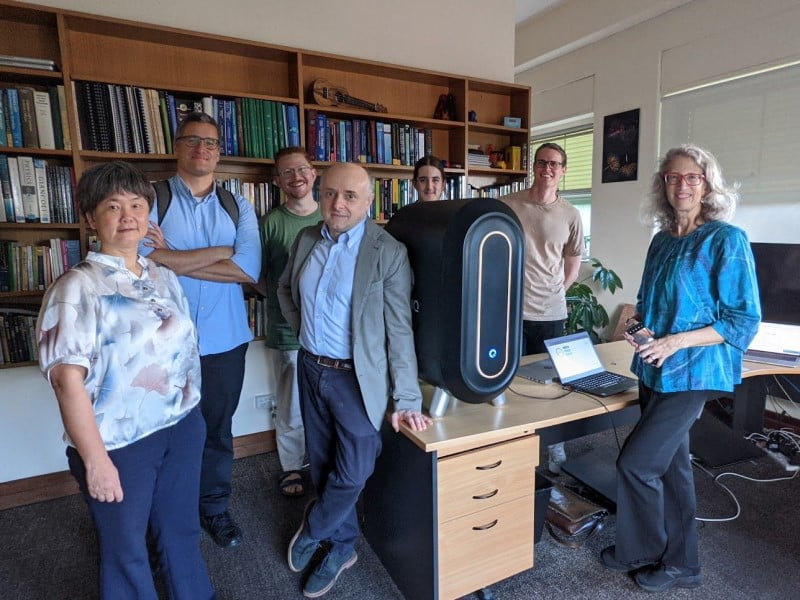A new quantum computing education and research hub has been unveiled at the University of Western Australia as Australia looks to strengthen its quantum capability.
Quantum computing is expected to produce $2.5 billion in annual revenue and support 10,000 new jobs in the Australian economy according to CSIRO estimates.

Australia was at the forefront of quantum innovation but other countries have since caught up. The Pawsey Supercomputing Research Centre hopes that their Quantum Supercomputing Innovation Hub will improve quantum competency so that Australia is well equipped to capitalise on the opportunities of the sector.
Pawsey will run a pilot program out of the hub in the first half of this year allowing more than 25 third-year UWA quantum computing students to gain first-hand experience with the machines. Through the pilot, Pawsey will track how the students use the quantum computer to improve the accessibility of the hardware in the long run.
UWA quantum physicist Professor Jingbo Wang, who is running the hub, said that quantum computing required a shift away from how people have traditionally approached computing.
“Quantum computing holds the promise of solving problems which are otherwise intractable on conventional computers. It also requires a whole new set of knowledge and skills for the next generation of research scientists and engineers. To give them a quantum mindset at an early age, the students will be on the cutting edge with their advanced knowledge,” said Professor Wang.
Although based at UWA, the hub is not exclusively for the use of students and staff at the university. Pawsey has ambitions to develop a software that will allow people to access the quantum computers from anywhere in the country. Pawsey will also create teaching material, run workshops, and conduct outreach events through the hub.
The hub hosts two quantum computers, a two-qubit SpinQ Gemini and a three-qubit Triangulum, which can function at room temperature and have full quantum control design capabilities.
Pawsey chief technology officer Ugo Varetto said it was important to improve the accessibility of quantum computing to “[set] the foundation for the future of quantum technologies.”
The power of quantum computing is exponentially greater than conventional computers allowing them to process data much faster. Its potential applications can improve modelling across diverse sectors like astronomy, AI, agriculture, finance, medicine, and defence.
Given the versatility of the technology, Pawsey has experienced growing demand for quantum education, training and support, coming from students and researchers. Pawsey Education and Training Manager Ann Backhaus said they were trying to lead students and teachers on their quantum journey.
“In 2021, about 10 percent of Pawsey’s 46 interns undertook quantum-based research during their 10-week program. The unique combination of supercomputing and quantum computing helps students step beyond 0s and 1s – binaries – to develop a quantum mindset,” she says.
“This quantum education and research hub will catalyse Australian science to break boundaries and diversify its applications, unlocking powerful potential and solving grand challenges.”
The Pawsey Supercomputing Research Centre is a joint venture between CSIRO, Curtin University, Edith Cowan University, Murdoch University, and The University of Western Australia. By providing supercomputing, data, cloud, and visualisation expertise and services, the centre can facilitate research across several industries.
In February 2022, Australia’s chief scientist Cathy Foley announced she would produce a quantum strategy by the end of the year. This would build on a Quantum Technology Roadmap that was released in May 2020.
Do you know more? Contact James Riley via Email.

